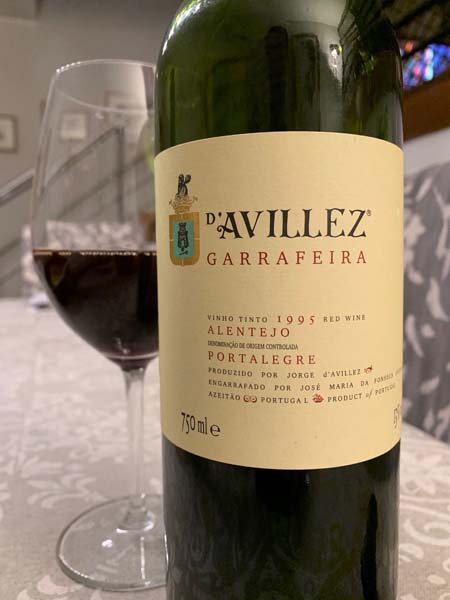
D’Avillez Garrafeira 1995
The last of 3 bottles I bought at Garrafeira Louro in Évora - this place for me is guaranteed that the wine was stored in the best conditions to age well. Nothing wrong with the opening, let's taste! The color is garnet with latijados glazes. Very intense, for the age...

Quinta de Foz de Arouce – Vinhas de Santa Maria 2001
Bottle recently purchased (at a very honest price) at Garrafeira Louro, owned by my friend João Passos, in Évora, where it has lived all these years in a climatized cellar, which meets all the requirements for an ideal aging of the wines. In fact, the bottle was in...
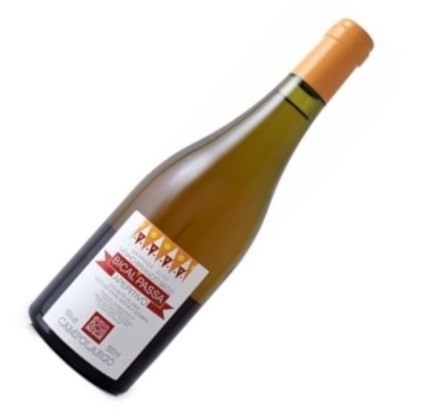
Bical Passa 2005
The PipaRoza restaurant, in Évora, is a box of surprises as far as wine is concerned. Being a regular customer, employees already know that I like to try new things, so they challenge me whenever they open something interesting (which happens with some frequency,...
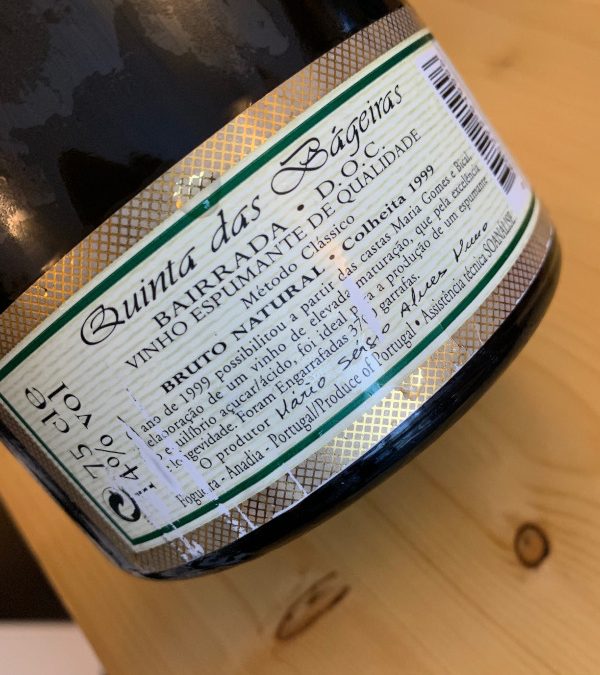
Quinta das Bágeiras Grande Reserva 1999
I am a big fan of these old sparkling wines from the Bagéiras. I remember with great pleasure (and nostalgia!) Of nectars like the Great Reserve of 2002 or the Old Reserves of 1993 (!!!) and of 2001, the latter only in "small" bottles of 3 liters: yes, small, because...
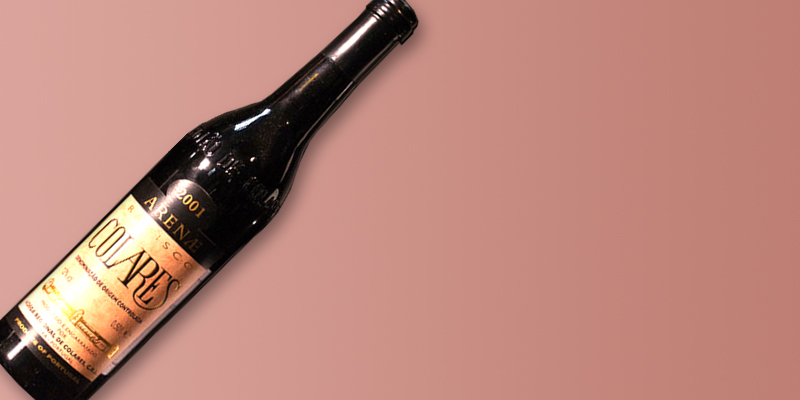
Arenae 2001
Colares is a wine-growing area with its own charm and the branched variety, impresses with its great acidity, giving its wines a longevity and an odd quality. This Arenae came to confirm all my great admiration for these wines of Colares. In the nose it is soon...

Wine4people wine tasting-Relics by João Quintela in restaurant Via Graça
We have been proposed a tasting of ancient wines, relics brought by João Quintela, from "Cellar Nectar das Avenidas", to be held in the restaurant Via Graça, space inaugurated in 1988, whose name derives from the electric celebrate 28 that traveled the field line...
The Relics Corner
We are currently living a unique moment in the Portuguese wine panorama.
In the years 1990-2000 we witnessed a real “boom” in table wines, a little throughout the country, in quantity but also in quality. This commitment to quality led to the creation of real icons, great wines, that came out and went to the market with prices to match.
Now, for many lovers a top wine to be a great wine must know how to age well. I am one of those who shares this opinion.
In the unique moment that we live we have the possibility to taste these wines with 10, 15 or 20 years of age. Never before in the national wine scene did we have a variety of good wines with respectful age: a privilege! But with privileges, come responsibilities. At wine4people we believe we have the responsibility to perpetuate in time every piece of history that is uncovered by jumping out of a cork.
In our relics tasting of March 2018, which served perhaps as an ante-chamber for the creation of this space, we wrote the following:
“The only rule is that they should have over 15 years old, that’s it, that is, from 2003 behind. Within this broad criterion, wines could be considered a “relic” for innumerable reasons. Because they are of a particularly advanced age (such as Viúva Gomes, whites or Madeira’s), because they are a first edition (such as Chryseia, Pan or T), because they have some particularity within (like Fojo), because they are foreign wines already of some age, that can not be drunk every day (like Dofí), because they come from absolutely “niche” regions (such as Boullosa and again Viúva Gomes) or even because they are old wines with labels that were completely unknown to us but which the producer had the courage and confidence to send us to our tasting (like the Visconde). Or maybe even for some other reason … ”
So, we don’t want to be too rigid in our definitions. There is only one certainty: all the relics will be very special!
Aged wines are able to give us moments of great wine exaltation, but sometimes also great delusions … Which are extraordinary? Which ones are still far from the ideal point of consumption? Which are the ones that have already surrendered the soul to the creator? How’s Chryseia 2000? Or the “T” of Terrugem from 1999? If we want to know the answer to these questions, the available information is rather scarce. There are forums of connoisseurs and mobile applications that can help answer these questions, but often the result is an amalgam of opinions of true connoisseurs, only eno-curious and of people who actually know little or nothing of wine …
This is where wine4people comes in. We are not professionals, but we have experience in wine tasting, including wines with age. We will try to provide independent and relevant information about the wines and answer some important questions: should I pay the €50 they ask me for this wine at the age of 15? I have kept this bottle for 10 years: should I wait or open at the next opportunity to avoid a great disappointment? Should I decant it? At what temperature should I serve? What other care should I take? There are some doubts that we will try to clarify.
Another area of interest to the Relics Corner is the discovery of great surprises in terms of the evolution of some “unpretentious” wines, inexpensive, and that reach the present day in extraordinary conditions. I am reminded, among others, of some Alvarinhos, or wines of Cooperative Wineries, such as those of Portalegre in the late 90’s.
The appreciation of wines with age, especially the older ones, has some peculiarities and difficulties. One of them is that the “old” wines, white and red, offer a universe of styles, aromas and flavors completely new and distinct from the new wines. A positive critique of an aged wine can be misinterpreted by a consumer looking for an old wine in a new wine. Another, perhaps more important, is that in this world of wines with many years of life there is a great potential for variation from bottle to bottle, depending essentially on its provenance and the conditions of care over the years. The bottle that the consumer opens at home may obviously be different (for better or worse) than the one we appreciate at wine4people. But if that happens to you, say it! Talk to us, leave your comments, we respond. Surely that will only serve to enrich the criticism of each wine and that will benefit all visitors to our site!
However, we consider that the difficulties previously stated are inescapable, and therefore we decided to close ranks and move on, against winds and tides!
Finally, a word for our fortifieds. If in the table wines the Portuguese have difficult competition for this world outside, in the fortified wines our wines are absolutely insurmountable in terms of quality and character! Porto (Tawny and Ruby), Madeira, Moscatel, Carcavelos … These also have, then, a special place in the Relics Corner.
But among the fortified, I would like to emphasize the Vintage Port. It is one of the most noble (if not the noblest) classes in the world of Port wine, one of the main “culprits” due to the prestige that Port wine has in the world. But here, in my opinion, does not occupy the position it deserves. And although it is easier to obtain information from old Vintages than from table wines, it is essentially found on foreign websites. A shame! The Relics Corner is not meant to be a reference forum for Porto Vintage (this, by itself, can make a dedicated website!). But we were just talking about responsibility. And there is no wine in the Portuguese wine scene beyond the Vintage Port where the responsibility of “reporting” each bottle is greater: Vintage Port * was created * to grow old! Each vintage bottle that it is open is a special, but ephemeral moment. This is because, unlike fortified wines aging in the hull, the Vintage Port evolves in the bottle (after 5 or 10 years, the wine will not be quite the same) and because, given the reducing environment in which it evolves, Vintage has to be consumed in a short window of a maximum of a few days, depending on the storage conditions and the age of the wine, as opposed to the “oxidized” hull wines, where the bottle can be kept open for months that will not have significant impact in wine. How many times has it happened to open a bottle of a (great) Vintage to realize that after all it is still going through the “silly phase” and that, too late, one realizes that after all one should have waited another few years? More information … W4P is here to help!
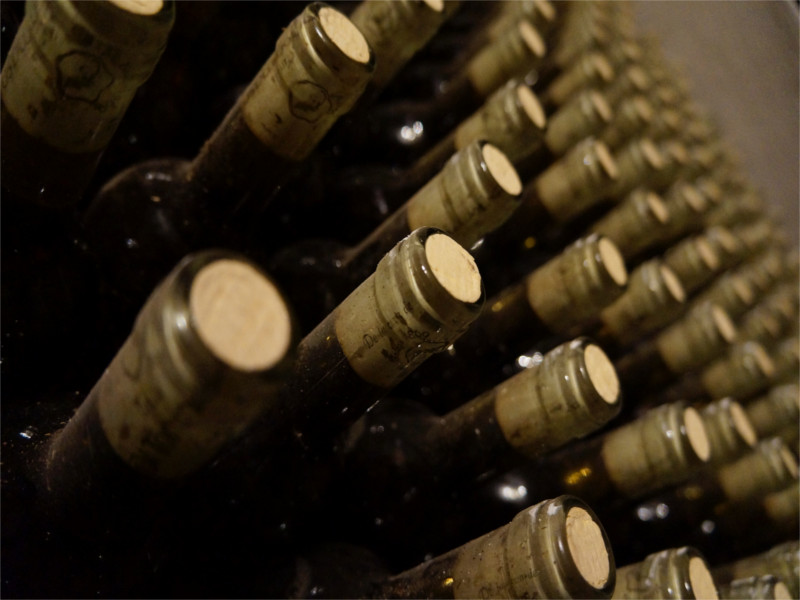
Relics

D’Avillez Garrafeira 1995
The last of 3 bottles I bought at Garrafeira Louro in Évora - this place for me is guaranteed that the wine was stored in the best conditions to age well. Nothing wrong with the opening, let's taste! The color is garnet with latijados glazes. Very intense, for the age...

Quinta de Foz de Arouce – Vinhas de Santa Maria 2001
Bottle recently purchased (at a very honest price) at Garrafeira Louro, owned by my friend João Passos, in Évora, where it has lived all these years in a climatized cellar, which meets all the requirements for an ideal aging of the wines. In fact, the bottle was in...

Bical Passa 2005
The PipaRoza restaurant, in Évora, is a box of surprises as far as wine is concerned. Being a regular customer, employees already know that I like to try new things, so they challenge me whenever they open something interesting (which happens with some frequency,...

Quinta das Bágeiras Grande Reserva 1999
I am a big fan of these old sparkling wines from the Bagéiras. I remember with great pleasure (and nostalgia!) Of nectars like the Great Reserve of 2002 or the Old Reserves of 1993 (!!!) and of 2001, the latter only in "small" bottles of 3 liters: yes, small, because...

Arenae 2001
Colares is a wine-growing area with its own charm and the branched variety, impresses with its great acidity, giving its wines a longevity and an odd quality. This Arenae came to confirm all my great admiration for these wines of Colares. In the nose it is soon...

Wine4people wine tasting-Relics by João Quintela in restaurant Via Graça
We have been proposed a tasting of ancient wines, relics brought by João Quintela, from "Cellar Nectar das Avenidas", to be held in the restaurant Via Graça, space inaugurated in 1988, whose name derives from the electric celebrate 28 that traveled the field line...
Relics Corner
We are currently living a unique moment in the Portuguese wine panorama.
In the years 1990-2000 we witnessed a real “boom” in table wines, a little throughout the country, in quantity but also in quality. This commitment to quality led to the creation of real icons, great wines, that came out and went to the market with prices to match.
Now, for many lovers a top wine to be a great wine must know how to age well. I am one of those who shares this opinion.
In the unique moment that we live we have the possibility to taste these wines with 10, 15 or 20 years of age. Never before in the national wine scene did we have a variety of good wines with respectful age: a privilege! But with privileges, come responsibilities. At wine4people we believe we have the responsibility to perpetuate in time every piece of history that is uncovered by jumping out of a cork.
In our relics tasting of March 2018, which served perhaps as an ante-chamber for the creation of this space, we wrote the following:
“The only rule is that they should have over 15 years old, that’s it, that is, from 2003 behind. Within this broad criterion, wines could be considered a “relic” for innumerable reasons. Because they are of a particularly advanced age (such as Viúva Gomes, whites or Madeira’s), because they are a first edition (such as Chryseia, Pan or T), because they have some particularity within (like Fojo), because they are foreign wines already of some age, that can not be drunk every day (like Dofí), because they come from absolutely “niche” regions (such as Boullosa and again Viúva Gomes) or even because they are old wines with labels that were completely unknown to us but which the producer had the courage and confidence to send us to our tasting (like the Visconde). Or maybe even for some other reason … ”
So, we don’t want to be too rigid in our definitions. There is only one certainty: all the relics will be very special!
Aged wines are able to give us moments of great wine exaltation, but sometimes also great delusions … Which are extraordinary? Which ones are still far from the ideal point of consumption? Which are the ones that have already surrendered the soul to the creator? How’s Chryseia 2000? Or the “T” of Terrugem from 1999? If we want to know the answer to these questions, the available information is rather scarce. There are forums of connoisseurs and mobile applications that can help answer these questions, but often the result is an amalgam of opinions of true connoisseurs, only eno-curious and of people who actually know little or nothing of wine …
This is where wine4people comes in. We are not professionals, but we have experience in wine tasting, including wines with age. We will try to provide independent and relevant information about the wines and answer some important questions: should I pay the €50 they ask me for this wine at the age of 15? I have kept this bottle for 10 years: should I wait or open at the next opportunity to avoid a great disappointment? Should I decant it? At what temperature should I serve? What other care should I take? There are some doubts that we will try to clarify.
Another area of interest to the Relics Corner is the discovery of great surprises in terms of the evolution of some “unpretentious” wines, inexpensive, and that reach the present day in extraordinary conditions. I am reminded, among others, of some Alvarinhos, or wines of Cooperative Wineries, such as those of Portalegre in the late 90’s.
The appreciation of wines with age, especially the older ones, has some peculiarities and difficulties. One of them is that the “old” wines, white and red, offer a universe of styles, aromas and flavors completely new and distinct from the new wines. A positive critique of an aged wine can be misinterpreted by a consumer looking for an old wine in a new wine. Another, perhaps more important, is that in this world of wines with many years of life there is a great potential for variation from bottle to bottle, depending essentially on its provenance and the conditions of care over the years. The bottle that the consumer opens at home may obviously be different (for better or worse) than the one we appreciate at wine4people. But if that happens to you, say it! Talk to us, leave your comments, we respond. Surely that will only serve to enrich the criticism of each wine and that will benefit all visitors to our site!
However, we consider that the difficulties previously stated are inescapable, and therefore we decided to close ranks and move on, against winds and tides!
Finally, a word for our fortifieds. If in the table wines the Portuguese have difficult competition for this world outside, in the fortified wines our wines are absolutely insurmountable in terms of quality and character! Porto (Tawny and Ruby), Madeira, Moscatel, Carcavelos … These also have, then, a special place in the Relics Corner.
But among the fortified, I would like to emphasize the Vintage Port. It is one of the most noble (if not the noblest) classes in the world of Port wine, one of the main “culprits” due to the prestige that Port wine has in the world. But here, in my opinion, does not occupy the position it deserves. And although it is easier to obtain information from old Vintages than from table wines, it is essentially found on foreign websites. A shame! The Relics Corner is not meant to be a reference forum for Porto Vintage (this, by itself, can make a dedicated website!). But we were just talking about responsibility. And there is no wine in the Portuguese wine scene beyond the Vintage Port where the responsibility of “reporting” each bottle is greater: Vintage Port * was created * to grow old! Each vintage bottle that it is open is a special, but ephemeral moment. This is because, unlike fortified wines aging in the hull, the Vintage Port evolves in the bottle (after 5 or 10 years, the wine will not be quite the same) and because, given the reducing environment in which it evolves, Vintage has to be consumed in a short window of a maximum of a few days, depending on the storage conditions and the age of the wine, as opposed to the “oxidized” hull wines, where the bottle can be kept open for months that will not have significant impact in wine. How many times has it happened to open a bottle of a (great) Vintage to realize that after all it is still going through the “silly phase” and that, too late, one realizes that after all one should have waited another few years? More information … W4P is here to help!
